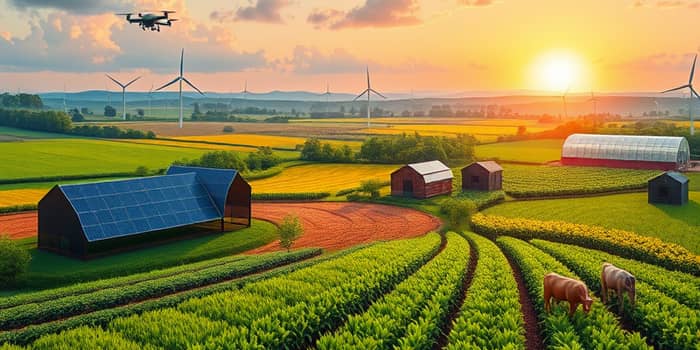
The challenge of feeding a growing global population while preserving our planet’s resources has never been greater. Sustainable agriculture offers a pathway not only to food security but also to long-term economic prosperity for farmers, communities, and investors alike.
By 2030, the world population is expected to reach 8.5 billion, intensifying the demand for reliable, nutritious food. Traditional farming methods strain soils, deplete water, and emit greenhouse gasses, exacerbating climate change.
Transitioning to sustainable systems is critical to balance productivity with environmental stewardship, ensuring our fields remain fertile for generations.
The global sustainable agriculture market was valued at $15.07 billion in 2024 and is projected to reach $28.36 billion by 2030, growing at a 10.8% CAGR. Specialized segments, such as soilless farming, are expanding even faster, with a projected value of $13.7 billion by 2029 (19.7% CAGR).
Key drivers propelling this growth include:
Modern sustainable agriculture encompasses a suite of practices aimed at improving soil health, conserving water, and enhancing biodiversity.
Regenerative methods are expected to exceed 10 million acres in the U.S. by 2025, while soilless systems in greenhouses and vertical farms reduce food miles and boost local security.
Emerging technologies are accelerating the shift toward sustainable operations through data-driven insights and automation.
By harnessing these tools, farmers can increase productivity, reduce environmental footprints, and adapt swiftly to changing conditions.
Sustainable farming is not only an environmental imperative but also an economic opportunity.
Studies reveal that sustainable farms deliver 25% greater community economic impact and higher long-term profitability compared to conventional operations.
Sustainable agriculture offers profound environmental benefits including reduced soil erosion, improved water conservation, and lower carbon emissions. By enhancing biodiversity, these systems build resilience against extreme weather events such as droughts and heatwaves.
Socially, sustainable practices support smallholder farmers, foster equitable resource access, and strengthen rural economies, helping to preserve farmland and local livelihoods for future generations.
The shift to sustainable methods requires substantial upfront investment in technology, training, and infrastructure. During the transition period, farmers may face yield uncertainty and higher labor expenses.
Access to capital remains uneven. Small-scale producers and rural communities often struggle to finance automation, climate-controlled greenhouses, and soilless systems, slowing widespread adoption.
North America leads the sector with strong net-zero targets and robust technology uptake. Meanwhile, the Western Cape’s agriculture sector in South Africa grew at 2.7% annually over the past decade, increasingly adopting climate-smart practices.
Globally, the OECD-FAO Outlook 2025–2034 underscores the paramount importance of sustainable productivity growth to safeguard food security and environmental health.
“Sustainable agriculture can be good for a farming family’s bottom line,” says Mark Ritchie, President of the Institute for Agriculture and Trade Policy. FiBL reports that organic sales surpassed $148 billion in 2023, reflecting shifting consumer preferences.
McKinsey & Company highlights that U.S. net-zero goals by 2050 are catalyzing widespread adoption of regenerative techniques. OECD-FAO concurs that sustainable productivity is essential to meet the food demands of a growing population.
The transition to sustainable agriculture is both a moral imperative and a lucrative investment. By embracing regenerative methods, cutting-edge technology, and supportive policies, farmers can secure higher yields, greater income, and healthier ecosystems.
Feeding the world sustainably while building wealth is within reach—provided stakeholders collaborate to reduce barriers, scale innovations, and invest in the resilience of our food systems. The future belongs to those who cultivate both the land and their economic well-being with responsibility and vision.
References





